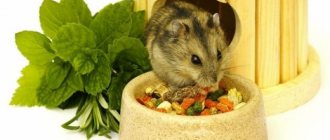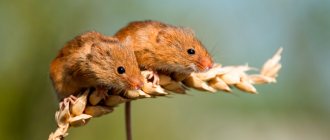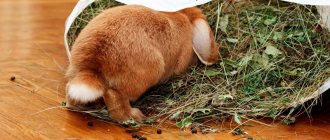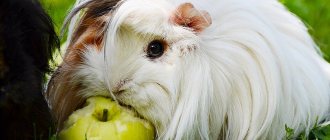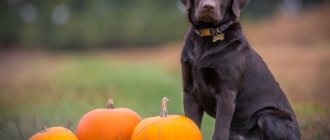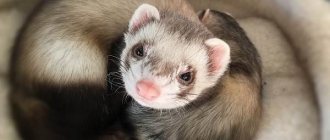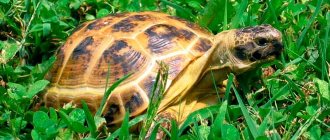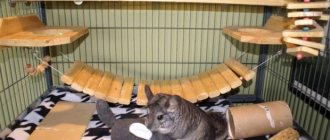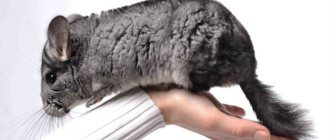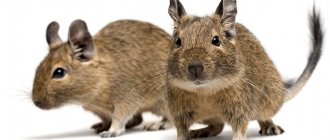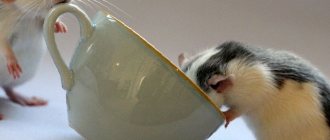Nutrition is one of the main aspects in the development of pets. Especially when we are talking about such a fragile organism as a chinchilla. The general well-being of the animal, the condition of its teeth, fur, and life expectancy depend on a properly selected diet. Therefore, novice rodent breeders often think about what to feed their chinchilla. The diet of furry pets needs to be made as varied as possible, while observing a lot of requirements.
You can read about bathing a chinchilla in our article - here.
Where do chinchillas live?
These rodents came to us from distant South America. Back in the 20s of the last century, they were adapted to life on the plains and at home.
And in nature they live in the mountains, in the Andes. But due to the fact that at one time they were hunted a lot, the number of chinchillas has greatly decreased and has not yet recovered. Their habitat in the wild has also narrowed greatly. They have long been listed in the International Red Book and are protected by the state. But even now they are considered very rare animals.
Can be given in limited quantities
- Sunflower seeds. A wonderful treat that chinchillas love. It is not only tasty, but also beneficial for their fur; it becomes thicker and shinier due to the oils contained in sunflower seeds. They can be given, but in very limited quantities. They are dangerous because of their high calorie content, 100 grams of seeds contain 580 calories, and in grains this figure is at the level of 150-250 calories per 100 grams. Chinchillas have a weak liver, so it is very difficult to digest seeds, so do not pamper your pet more than 1-2 times a week. They can also be excluded from the diet to ensure that liver problems do not arise.
- Nuts. For chinchillas, nuts are a heavenly pleasure; they almost start singing when they see delicious nuts. Like seeds, they are harmful due to the huge amount of calories, about 600 calories in almonds and walnuts per 100 gram serving. You should give nuts rarely or exclude them from the diet.
- Legumes. Quite a dangerous food because it causes gas formation in the stomach. Chinchillas have a poorly developed digestive system and it is extremely difficult for them to remove gases, so if you regularly feed them legumes, then after a while the animal will become bloated. This disease is quite dangerous and if not cured in time, the animal will die.
- Dried fruits . (Raisins, dried apricots, etc.) Chinchillas, of course, love dried fruits because they are very tasty and nutritious. They can be given in limited quantities only 1-2 times a week, but they cannot be made the main treats. In addition to gastrointestinal disorders, they may have metabolic disorders or liver disease. Therefore, it is best to give dried fruits in very small portions so as not to harm your animal.
- Juicy food. Juicy foods include all raw foods, for example, apples, tomatoes, raw grass, berries. Chinchillas love them very much, but they are harmful to them. Due to the juicy food, they form gases that they are not able to remove and bloating occurs, which is very dangerous. It is better not to give juicy food at all, but if
What do chinchillas eat in natural conditions?
Chinchillas are rodents. The nutrition of chinchillas depends on the conditions in which they live in nature. First of all, they eat plant foods, what grows in their native highlands. And this is grass, cereals and legumes (quite wild specimens), mosses, branches of shrubs, etc. Chinchillas also gnaw bark from trees and even cacti.
Food for chinchillas is not only grass or grains; they do not hesitate to snack on insects. As, indeed, are many other herbivores.
They are not picky about their diet and eat little in the wild. But provided that the food is high in calories.
The issue of nutrition is one of the most important for any living creature. Both the appearance and the quantity (and quality) of the cubs depend on proper and balanced nutrition. Both health and life expectancy.
It should be taken into account that chinchillas are long-lived, unlike many other rodents, such as rats, hamsters and even rabbits. Chinchillas live 20, 30 or even more years.
So, properly feeding chinchillas at home can improve their quality of life and significantly prolong it.
But before we talk in detail about what chinchillas eat or don’t eat, remember one piece of advice: these animals do not tolerate sudden changes in food very well. If they are immediately switched to a new food, they may get sick or even die! Moving to a new home is already stressful for the animal, and then there is another food. By the way, the animals are not very stress-resistant; they do not tolerate noise, travel, or crossings well. So don't add to their stress with unfamiliar foods.
By the way, it is recommended to buy several types of food and give it to your pet to try, which one he chooses. After all, they also have their own taste preferences.
So, when purchasing a pet, ask in detail what to feed the chinchilla, what it likes and what it is used to. And start feeding exactly the way she is already accustomed. All other changes can be introduced only gradually and not immediately.
Chinchilla food is sold in many stores. You can also buy vitamin supplements there and get advice on feeding and care.
Hay
It is the main source of nutrition for chinchillas, because it contains the fiber they need, and it also helps improve digestion. Hay should be in the cage at all times, and the chinchilla should eat as much of it as she wants. She definitely won’t overeat hay as a treat, so update the feeder more often.
Choice of hay.
Most owners of these animals buy hay from pet stores, because there are practically no useful herbs in urban areas. It is not expensive and you will have many types of hay for rodents to choose from.
Hay is not divided into types, but it can be divided into the following groups:
- Common meadow. The composition is quite simple, but very often there are herbs that are not included in the composition. This kind of hay is very cheap, usually 100 rubles per 1 kg. Production is mainly in Russia.
- From selected herbs, mountain or legumes. This hay is selected specifically for chinchillas or for animals very close to them (for example, rabbits). The composition is made taking into account many requirements for feeding chinchillas, most often the production is imported. The cost of such hay is 2-3 times higher than usual, about 300 rubles per 1 kg.
- Hay with additives. It can be either meadow or grass, but with the addition of something. Mostly carrots, apples or healthy herbs are added. Such hay costs about 500 rubles per 1 kg. I won’t recommend it because it has several disadvantages. For example, carrots can easily become infected with moths or other insects; as a result, the food will be spoiled and the chinchilla may have digestive problems.
Hay from ordinary or legume grasses is considered more useful. Thanks to it, the animal meets most of its needs for vitamins and microelements. Chinchillas eat it in larger portions than regular meadow milk.
What kind of hay should be:
- Dry
- No unnecessary debris, sticks or stones
- High quality hay smells good
- No rot or mold
- The packaging must be undamaged, otherwise various individuals, mold or rot may already live there.
Forb hay is very nutritious if it contains legumes and cereals, as well as bird buckwheat, salsify, etc. Before flowering, herbs are especially rich in vitamins and nutrients. Therefore, the hay should consist of forbs, mowed before the first flowering of the grass. Late-cut grasses have low nutritional value.
Ferns, rush grass, datura, black nightshade, spurge, horsetail, white hellebore, henbane, cornflower, crow's eye and other poisonous plants should absolutely not be included in chinchilla hay.
When to feed a chinchilla?
We must not forget that these animals are nocturnal. So in the evening their activity increases significantly. So you need to give them food in the evening. Moreover, the food must be fresh. Spoiled food should be thrown away, otherwise the animal will get sick. Feeds enough once a day, or rather, in the evening.
You also need to change the water every day, it should always be clean. But chinchillas do not need water for bathing; their fur instantly gets wet from moisture. So they don’t like water and don’t know how to swim. And they “wash” in nature - in sand or volcanic ash. And in cellular conditions they should have the same sandy “bath”. By the way, they really like to “wash” with sand like this and they definitely need to be provided with this “service” so that they are healthy and happy with life. Sand helps clean their skin and relieves stress.
What to feed a chinchilla at home list:
First of all, this is specialized food for chinchillas, concentrated. This is the basis of their diet. But you definitely need to add various additives to the base so that the food is varied and balanced.
- Grains and cereal crops.
- Various greens.
- Treats.
These are the main components of feeding these rodents. Next, we will consider in detail all categories of feed. All components of a chinchilla’s diet are equally important; without any one component, the animal can get sick or die, because on its own it cannot compensate for the lack of necessary elements.
What to feed a chinchilla at home list
The main diet of a chinchilla
- Ready-made food, regular or granular.
- Hay
- Pure water
Additional food:
- Something to chew on
- Treats
- Seasonal Immune Supplements
Food and hay should be in the cage at all times; the chinchilla itself knows when it needs to eat. They have no tendency to overeat, but if you notice that your animal has begun to quickly gain weight and fat has appeared on its sides, then you need to reconsider its diet.
A typical chinchilla consumes per day:
- From 10 to 40 grams of ready-made food
- 10-25 grams of hay
- 30-50 ml of clean water
What do chinchillas eat at home? List of products:
- Tomatoes, celery, cucumbers, carrots, pumpkin, zucchini.
- Apples, pear, melon (very little), berries, bananas (very little), rose hips, hawthorn, raisins (very little, because they are sweet). In general, too sweet fruits or berries should either not be given at all, depending on the health of the animal, or their consumption should be significantly limited.
- Tops of carrots, peas, as well as clover, dandelions, burdock leaves, plantain, strawberry leaves, nettles. And also sprouted cereals. Cereal sprouts are especially relevant in winter, when problems arise with fresh greens.
- Dried bread, namely crackers or crispbread. A small amount of.
- Various treats - you need to give them a little, but constantly. It can be dried fruits, berries.
You cannot give a lot of fruits and vegetables, only in the form of a small additive to the main food. Otherwise, the rodent's sensitive digestion will be upset. Fresh leaves should be dried a little before serving, and carrots and other root vegetables must be washed. It is not recommended to give a lot of beets. In nature, of course, animals eat branches and roots unwashed, but domestic animals, which are also bred in captivity and have never lived in the wild, have a more delicate digestion than their wild relatives. Therefore, they are very sensitive to dirty or spoiled food. But even with proper care and hygiene, they live much longer than their wild counterparts.
But this list is far from complete. There are also differences of opinion among experts. So it’s better to check your pet’s diet in advance.
By the way, you need to feed the animal once a day, at a certain time, preferably in the late afternoon. And if it tears the food and scatters it, it’s worth reducing the portion a little. The food must be eaten completely. Water should always be fresh, and experts recommend that it be boiled or distilled.
What can you feed a chinchilla besides food?
Now let’s figure out what else you can feed your chinchilla. For proper development and grinding of teeth, it is necessary to allow the child to chew on twigs, sticks, and driftwood. But there is a whole list of tree species that should never be given! They are poisonous to chinchillas!
These are trees such as:
- Maple.
- Cherry.
- Plum.
- Elder.
- Apricot, peach, nectarine.
- Almond.
- Oak - good for diarrhea, but can cause constipation in healthy animals.
- Pine and pine cones.
- Spruce and fir cones.
- All citrus fruits.
- Mango.
- Sandalwood.
- Cypress.
- Such an exotic tree as sequoia, etc.
In general, experts consider the branches of all stone fruits to be poisonous to these rodents! The list is far from complete, so you need to be very careful not to poison your pet. And try to check all tree species in advance before treating the animal with branches.
What to feed a chinchilla to painlessly grind down its teeth? We should also not forget that chinchillas, like all rodents, have teeth that grow throughout their lives. In nature, they grind them down on their own. At home, the owner should take care of this. Beech is highly recommended for grinding teeth - it has hard wood that can replace stone.
If there is no suitable hard wood, then they give it a stone to chew on. Naturally, it should not be taken directly from the ground and dirty. For pets, all food and items should be thoroughly washed before use.
What's not allowed?
The fluffy rodent has sensitive digestion. Therefore, the following products are prohibited from being given to him:
- meat products;
- bakery products;
- prepared human food;
- eggs;
- fermented milk products;
- products whose quality and freshness are questionable;
- mushrooms;
- pasta;
- roasted seeds and nuts;
- raw potatoes, lettuce and fresh cabbage;
- sugar-containing products;
- chips, popcorn, fast food.
These products will not bring any benefit to your pet. They are saturated with fat and extremely high in calories. So the mentioned food will not have a beneficial effect on the development and growth of the pet, and will even cause obesity . Even if the chinchilla likes such products, giving them is strictly prohibited.
What should you not feed your chinchilla?
We have outlined in general terms what chinchillas eat at home. Now let's look at what they shouldn't eat.
In addition to the desirable and mandatory foods, there is a whole list of undesirable ones. Sometimes owners really want to feed their pets something tasty and healthy. From the owner's point of view, of course. But some of these products that are beneficial for humans can be harmful and even dangerous for animals.
So before feeding, you need to immediately study the list of what chinchillas should not eat. To avoid health problems. It is necessary to immediately determine what chinchillas can eat occasionally, and what should never be given.
Granulated food for chinchillas
Lately, pelleted foods have become very popular. Their advantage over regular ones is that chinchillas eat the pellets completely, rather than selecting individual components.
Chinchillas eat pellets well
The best food for chinchillas should have the ideal composition. This is very important, since the food must cover all the needs of the animals.
Pelleted food has a common basis:
- grains;
- vitamins;
- calcium.
Granules for chinchillas
When purchasing food, you need to pay attention to the percentage of components. Fats should not exceed 5%. Ideally the ratio looks like this:
- 15-18% proteins;
- 17-25% fiber;
- 3-5% fat.
A really good food should have a lot of grasses, grains and the right vitamin supplements. It is important that the food contains large amounts of calcium, fluorine, iodine and iron.
List of do's and don'ts on what to feed a chinchilla
- You should never feed food that is expired, rotten or moldy. If there is any uneaten food left in the feeder, it should be thrown away and the feeder should be washed before adding fresh food.
- You should not give dirty fruits; in the wild they do not wash their food. And at home they can get sick if vegetables or fruits are caught with dirt.
- Do not overfeed with treats. Just as small children should not be given a lot of sweets, animals should be limited in their treats. In general, it is better to underfeed an animal a little with goodies than to overfeed it.
By the way, there is no single list of treats for all chinchillas. Some people like one thing, others another. Their tastes are individual.
- Dried fruits are too sweet for chinchillas; it is better to give them some dried apples.
- In general, it is better to collect and dry any dried fruits, vegetables, herbs or leaves specially, because purchased ones can be treated with chemicals. But this is harmful for the animal.
- You need to understand that what a chinchilla eats at home is not at all like what a human eats. Therefore, feeding her from your table is not only unnecessary, but also harmful.
- Honey is given only to the sick and only a drop. Lick.
- Oddly enough, cottage cheese is harmful for chinchillas.
- Products of animal origin, such as sausages or sausages, are definitely not suitable for chinchillas to eat.
Additional feeding requirements for chinchillas
If you provide your chinchilla with timely and high-quality food, this does not mean that it will develop 100% correctly and live a long time. It is necessary to take into account additional requirements for feeding chinchillas and constantly monitor the condition of the animal.
Helpful Tips:
- Remove leftover food from chinchillas and change bedding as often as possible. If this is not done, then mold and rot may develop in the food and bedding, which will instantly lead to digestive diseases.
- When cleaning, pay attention to the size of the bolus; if they seem runny or smaller than usual, then you need to take action. You can leave a couple of boluses and after 1-2 days compare them with fresh ones; if the sizes remain the same, then everything is in order. If the boluses have become smaller or softer, then it is necessary to look for symptoms to identify the disease. Of course, it is best to show the animal to a veterinarian, but since not everyone has the opportunity, you just need to monitor the animal’s condition and determine the disease based on obvious symptoms.
- You should not suddenly change your chinchilla's diet. If you need to change food, you need to change it gradually. Start feeding ¼ new food and ¾ old food. After a week, if there are no changes in the chinchilla’s behavior, then you can give the old and new food 50/50, and after another week, start giving only the new food.
What grass do chinchillas eat?
It must be said right away that chinchillas eat both fresh grass and hay. It depends on what you are used to. But this does not mean that you can give chinchillas both fresh and dry grass at the same time. It is better not to mix hay with fresh grass. And if you retrain an animal, then do it gradually, accustoming its intestines to the new food.
Hay can be bought at pet stores, but if possible, it is better to collect and dry it yourself to know for sure that it is clean and without harmful impurities.
Vitamins and their benefits for pets
Vitamin complexes are not only intended for young, sick, lactating, pregnant and weakened animals. The intake of vitamins in food will protect your pet from possible illnesses. These supplements are sold in pet stores and come in liquid, powder or solid form.
Tablets and powders are extremely difficult to feed to a fluffy dog. Therefore, it is better to choose fortified complementary foods in liquid form . So it can be easily mixed into water and the rodent’s diet will be significantly enriched.
Make sure that there are always salt and mineral stones in the chinchilla's cage. They will have a beneficial effect on the animal’s body and help it take care of its constantly growing teeth.
Dry yeast can replenish protein reserves. They will also help enrich the chinchilla’s body with B vitamins. It is important to add them to the food a little at a time.
Pros and cons of keeping chinchillas in an apartment.
DIY treats for chinchillas
If it’s hard to buy ready-made treats for chinchillas in your city, you can make them yourself and this will save you a lot of money.
The most popular DIY treats:
- Dried apples and carrots. From the name it is already clear that you just need to dry the apples and carrots. But apples should not be hard as a brick. Dry only in hot weather or in an electric dryer so that no nasty things can get in there.
- Sweet sticks. A very good type of treat because it combines pleasure and benefit at the same time. They should include the daily amount of basic food and additional treats. Also, for prevention, you need to add microelements and vitamins if there are few of them in the main feed. The manufacturing technology is quite simple, you need to collect the main food that you buy, mix it in a bowl with finely chopped treats and combine it with an adhesive base, for example honey. See our website for more detailed recipes.
- Dried tree branches. Prepare the branches and dry them thoroughly. Use only those trees that are listed above in this article.
- Dried berries. Most often, hawthorn and rose hips are dried, since they are quite easy to find in our region. Before drying, select rotten berries so as not to harm your pet.
- Dried leaves and herbs. There is nothing complicated about this, you just need to collect tree leaves and grass that are safe for chinchillas, and then dry them. The main thing is to prevent rot and mold, so you need to dry it either in very hot weather or in a special electric dryer. Do not collect herbs near roads or in dusty places; only clean leaves and herbs from the forest should be used to feed chinchillas.
Food is tough and juicy
Juicy foods include tree fruits, vegetables, berries, twigs, and herbs. These products contain many vitamins necessary for the proper development of your beloved pet. In the fall, he will happily gnaw on vegetables, fruits and dried fruits. It is also useful to collect chicory, raspberry or spinach herbs.
It is not recommended to give other herbs; the consequences are unknown. It is forbidden to include cabbage in the diet; it causes stomach fermentation. Some veterinarians also do not advise giving your pet a lot of carrots; one ring of dried root vegetables per week will be enough. In order to please your pet with both healthy and tasty food, you can give twigs of apple, acacia, birch or oak. These supplements will improve the chinchilla's metabolism by saturating the body with tannins.
Remember! Before giving a twig to a rodent, it must be thoroughly processed, washed and dried. The branch should be free of fungus, mold and harmful insects.
What other delicacies are there?
In order not to bother with making treats or properly storing dry fruits, we came up with special ready-made treats. Most often it is sold in the form of sticks.
These sticks contain not only treats, but also other useful ingredients such as grains, seeds and herbs. The chinchilla will simultaneously receive a portion of delicious food and, unnoticed, eat healthy supplements.
They also sell sticks with treats that contain vitamin supplements and microelements to feed during illness or for prevention. For example, these crackers contain calcium, and in addition vitamins A, D3, E, C.
Feeding mode
When thinking about the issue of feeding a chinchilla, it is necessary to remember that the activity phase of this animal occurs mainly at night. Therefore, with the arrival of dusk, you can fill the bowl with food. The animal will see the bowl and run up to eat. But you don’t need to expect that your pet will attack the food, basically he will eat a few grains and run around the cage to jump, after a while he will return to the cup and so on all night.
Stability is also important to ensure the animal’s good mood and well-being. It is not recommended to frequently change food to another manufacturer, as this may have a bad effect on your pet’s well-being. If you still need to change the food, you need to do it gradually, dragging out the process for the whole week. A mineral stone must be present in the cell during this process at all times. The pet will chew through it as needed.
Read! Chinchilla in the house: pros and cons
Next, let's take a closer look at the types of feed.
